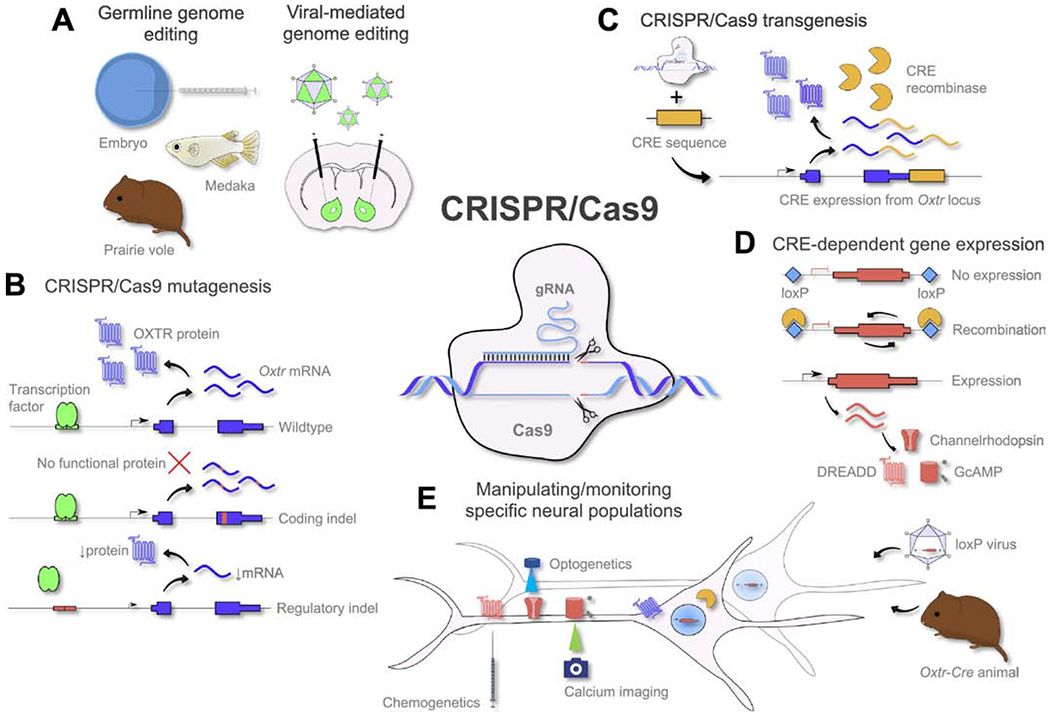Figure 1.

Use of the CRISPR/Cas9 toolkit for comparative studies of OXT and AVP signaling. A) (Left) CRISPR/Cas9 components can be injected into the embryo to generate germline transgenic animals, as has been done for prairie vole (Horie et al. 2018) and medaka fish (Yonoi et al. 2020). (Right) CRISPR/Cas9 components can be packaged into viral vector to enable genomic editing of neural population with spatiotemporal control. B) After induction of double-stranded breaks in the DNA, non-perfect repair mechanisms result in small indels, that can be used to disrupt the coding sequence of Oxtr, or regulatory elements that control Oxtr expression. C) CRISPR/Cas9 can be used to place the Cre sequence after Oxtr or Avpr1a to generate Oxtr-Cre or Avpr1a-Cre transgenic animals. D) CRE recombinase inverts genetic sequences that are flanked by loxP sites, and is exploited to specifically express DREADD, channelrhodopsin and GcAMP in CRE-positive cells. E) Specific expression of transgenes allows for the manipulation and monitoring of neural circuits with (sub)cellular resolution.
